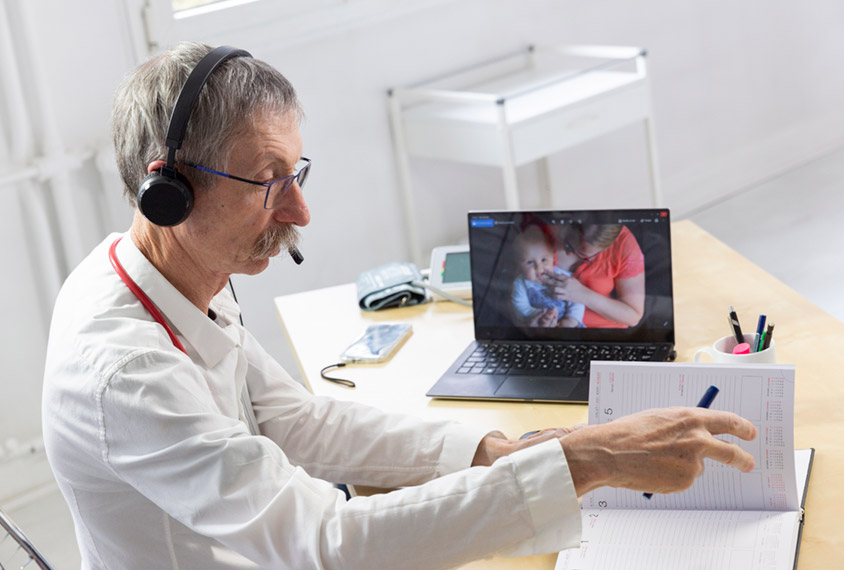Cut off from clients by the coronavirus pandemic, clinicians are turning to video conferencing and other technologies to diagnose children with autism.
Some clinicians say remote diagnoses are not as reliable as in-person diagnoses, but others argue that such services provide a valuable substitute until they can see children in person again.
The latest estimates indicate that 1 in 54 children has autism in the United States. Clinicians typically diagnose these children by observing their interactions with others — how the children play with toys and respond to requests, for example — over several hours. They can then direct children who are diagnosed to services that might help, including speech or behavioral therapy.
All of that is on hold during the pandemic.
“The impact on diagnosis is major,” says Sarah Spence, co-director of the Autism Spectrum Center at Boston Children’s Hospital. She and her colleagues in Massachusetts are organizing emergency measures to diagnose children remotely.
The clinicians use remote video to observe the child at play and interacting with parents — much as they would do during an office visit.
But a key challenge is persuading insurance companies and Medicaid — the U.S. government’s health insurance scheme for low-income families — to accept the diagnoses. Roula Choueiri, who heads pediatrics at UMass Memorial Children’s Medical Center in Worcester, Massachusetts, has drafted a set of standardized guidelines to help convince insurers of the validity of such assessments.
Telehealth trend:
The push toward telehealth approaches for autism predates the pandemic, prompted in large part by the need to improve access to autism services. Families often wait more than a year for a diagnosis, particularly if they do not live near a city.
“A lot of the services are centered in metropolitan areas, and kids and families in rural areas often have trouble accessing diagnosis,” says Rebecca Sutherland, assistant professor of speech pathology at the University of Canberra in Australia.
A 2018 review of 14 studies found that telehealth services, including diagnostic assessments, are sometimes as beneficial as face-to-face services, but most of the studies had small samples, says Sutherland, who co-authored the review1.
One system for remote diagnosis that was in use before the pandemic is the Naturalistic Observation Diagnostic Assessment, which relies on videos parents upload via a smartphone app to a secure website2.
Parents film their child in four everyday scenarios, including calling the child’s name. A clinician can then assess the child’s responses using the diagnostic criteria outlined in the Diagnostic and Statistical Manual of Mental Disorders to make a diagnosis.
“We came up with a system which was very simple,” says Nazneen, a researcher at Google in Mountain View, California, who developed the assessment in 2015 as a graduate student.
But the tool misses some children. In 2017, Nazneen and her colleagues compared it with in-person diagnoses for 51 families3. The two methods agreed only 85 percent of the time. The assessment works best in children who have clear autism traits, Nazneen says.
Other options:
Other experts emphasize that there are limits to what can be achieved remotely.
For example, it is not possible to remotely assess children using the Autism Diagnostic Observation Schedule, a gold-standard diagnostic technique, notes Catherine Lord, professor of psychiatry at the University of California, Los Angeles and the test’s co-creator.
“It is based on social interaction with a person who is in front of you,” Lord says. Clinicians should instead direct parents of children with suspected autism to sources of information and offer practical tips, she says.
Just telling parents, “You’re right, something is different about your child and you are not crazy” can be helpful, Lord says.
Beyond telehealth and advice, families may need other specialized services during the pandemic, Spence says, including mobile crisis-intervention units that help autistic children in their homes.
“We’ve had several kids come into the hospital,” she says, “not because they were ill but because the parents just couldn’t handle them at home.”





